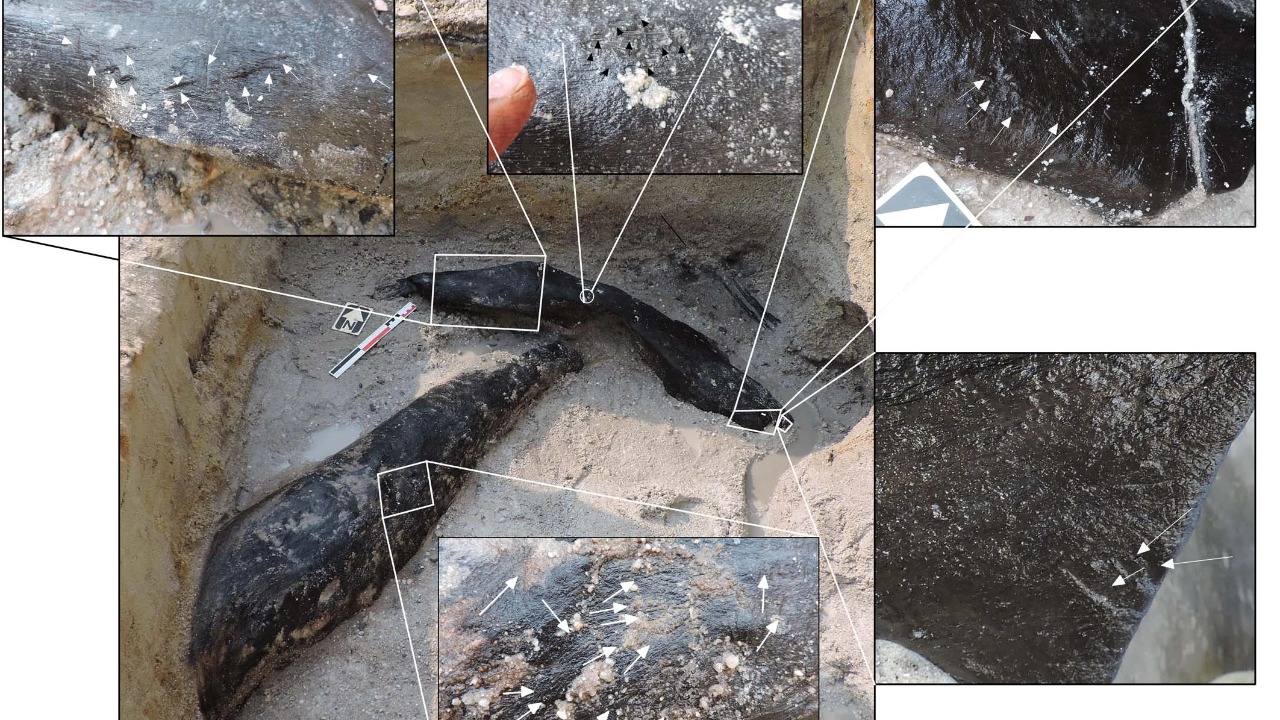
Archaeologists have made a groundbreaking discovery at Kalambo Falls in Zambia, unearthing what is now considered the world’s oldest known wooden structure. This remarkable find dates back over 476,000 years, predating the evolution of Homo sapiens. The structure, found in waterlogged sediments near the waterfall, consists of notched logs that were deliberately shaped and joined together. This discovery challenges previous assumptions about the technological capabilities of early humans or their ancestors, suggesting a much earlier development of woodworking skills and environmental adaptations in Africa.
Discovery at Kalambo Falls
Kalambo Falls, located on the border between Zambia and Tanzania, is a site of both natural beauty and archaeological significance. The misty, riverine environment of the falls has created unique preservation conditions, allowing organic materials to survive for millennia. In 2023, a team of researchers from the University of Liverpool and Aberystwyth University led an excavation at this site, uncovering wooden artifacts buried in layered sediments. The low-oxygen, waterlogged soils at Kalambo Falls have played a crucial role in preserving these ancient wooden structures, offering a rare glimpse into the technological practices of early hominins.
The excavation at Kalambo Falls has revealed a wealth of information about the past. The wooden artifacts, found in a stratified context, provide a timeline of human occupation and activity in the area. The preservation of these materials is a testament to the unique environmental conditions at the site, which have protected them from decay for over 476,000 years. This discovery not only sheds light on the technological capabilities of early humans but also highlights the importance of preserving and studying such sites to understand our shared history.
The Wooden Structure Itself
The wooden structure discovered at Kalambo Falls is composed of two large logs with intentional notches and a third log shaped to interlock with them. This indicates a level of purposeful construction that was previously unrecognized in such ancient contexts. The dating of these artifacts was achieved through luminescence dating, which confirmed their age at 476,000 years, significantly predating the emergence of Homo sapiens by at least 280,000 years. This suggests that the structure was likely built by Homo heidelbergensis or another early hominin species.
The craftsmanship evident in the wooden structure is remarkable. The use of stone tools to shape the wood demonstrates advanced planning and skill, challenging previous assumptions about the technological capabilities of early hominins. This find pushes back the timeline of woodworking by hundreds of thousands of years, offering new insights into the cognitive abilities and environmental adaptations of our ancestors. The deliberate construction of the structure suggests that early humans were capable of complex thought and planning, traits that were once thought to be unique to Homo sapiens.
Implications for Early Human Technology
This discovery at Kalambo Falls has significant implications for our understanding of early human technology. Previously, the oldest known examples of woodworking were only about 40,000 years old, found at other archaeological sites. The find at Kalambo Falls rewrites this timeline, suggesting that early hominins were engaging in woodworking activities much earlier than previously thought. This challenges the notion that complex tool use and construction were exclusive to Homo sapiens and highlights the advanced capabilities of earlier hominin species.
The wooden structure may have served various purposes, such as a platform or walkway over wet ground near the falls. This indicates that early humans were not only capable of constructing complex structures but also adapting to their environment in innovative ways. The repeated occupations at Kalambo Falls over a span of 300,000 years demonstrate sustained tool-making activity, suggesting that the site was an important location for early human populations. This find underscores the importance of environmental factors in shaping human evolution and technological development.
Broader Archaeological Context
The discovery at Kalambo Falls can be compared to other significant archaeological sites in Africa, such as Olduvai Gorge, to illustrate the evolving understanding of prehistoric technology. While stone tools have long dominated the archaeological record, the preservation of wooden artifacts at Kalambo Falls fills a critical gap in our knowledge. This find highlights the challenges of studying perishable materials like wood, which rarely survive in the archaeological record, and underscores the importance of preserving and studying sites with unique preservation conditions.
Ongoing research at Kalambo Falls and other similar sites is crucial for uncovering more artifacts from the same period. Further excavations could provide additional insights into the technological capabilities and environmental adaptations of early hominins. This discovery not only enriches our understanding of human history but also emphasizes the need for continued exploration and study of archaeological sites worldwide. As researchers continue to uncover new evidence, our understanding of early human technology and evolution will undoubtedly continue to evolve.
For more details on this groundbreaking discovery, you can read the full report on CNN.
More from MorningOverview